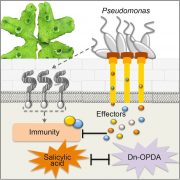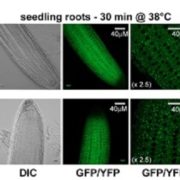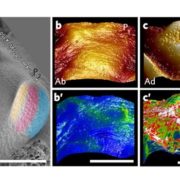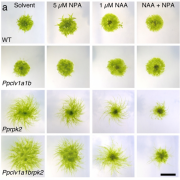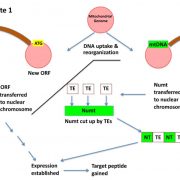Convergent evolution of plant prickles
 Contrary to common belief, roses do not have thorns: instead, they have prickles. Thorns (as in hawthorns) are modified stems, spines (as in cactus spines) are modified leaves, and prickles (as in roses) are modified epidermal tissues. Prickles occur in a wide range of plants. Satterlee et al. set out to investigate the genetic basis for prickle formation, starting with a comparison between a prickleless cultivated eggplant (Solanum melongena) and its prickled wild relative (Solanum insanum). Interestingly, they identified a gene known to be involved in cytokinin biosynthesis, LONELY GUY (LOG), as critical for prickle formation. The authors looked across the Solanum genus and beyond and found that mutations in LOG are widely correlated with prickle loss. Furthermore, homologous prickle-like structures known as barbs in grasses are also dependent on a functional LOG gene, indicating that loss of prickles has occurred convergently. Finally, the authors used gene editing techniques to produce prickleless varieties without additional pleiotropic effects. (Summary by Mary Williams @PlantTeaching) Science 10.1126/science.ado1663
Contrary to common belief, roses do not have thorns: instead, they have prickles. Thorns (as in hawthorns) are modified stems, spines (as in cactus spines) are modified leaves, and prickles (as in roses) are modified epidermal tissues. Prickles occur in a wide range of plants. Satterlee et al. set out to investigate the genetic basis for prickle formation, starting with a comparison between a prickleless cultivated eggplant (Solanum melongena) and its prickled wild relative (Solanum insanum). Interestingly, they identified a gene known to be involved in cytokinin biosynthesis, LONELY GUY (LOG), as critical for prickle formation. The authors looked across the Solanum genus and beyond and found that mutations in LOG are widely correlated with prickle loss. Furthermore, homologous prickle-like structures known as barbs in grasses are also dependent on a functional LOG gene, indicating that loss of prickles has occurred convergently. Finally, the authors used gene editing techniques to produce prickleless varieties without additional pleiotropic effects. (Summary by Mary Williams @PlantTeaching) Science 10.1126/science.ado1663



